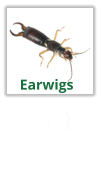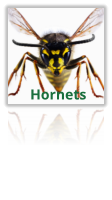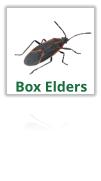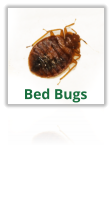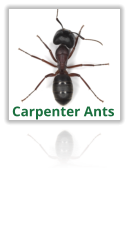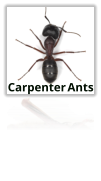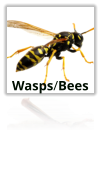

Being Pestered? We can help, call
Lakeshore Exterminating Company today.


© 2022 Lakeshore Exterminating Company, Iron Mountain, MI
Do not copy any content, including images without our consent.
Stinging
Insects
Wasps
Wasps make up an enormously diverse array of insects, with some 30,000 identified species. We are most familiar with those that are wrapped in bright warning colors—ones that buzz angrily about in groups and threaten us with painful stings. But most wasps are actually solitary, non- stinging varieties. And all do far more good for humans by controlling pest insect populations than harm. Wasps are distinguishable from bees by their pointed lower abdomens and the narrow "waist," called a petiole, that separates the abdomen from the thorax. They come in every color imaginable, from the familiar yellow to brown, metallic blue, and bright red. Generally, the brighter colored species are in the Vespidae, or stinging wasp, family. All wasps build nests. Whereas bees secrete a waxy substance to construct their nests, wasps create their familiar papery abodes from wood fibers scraped with their hard mandibles and chewed into a pulp. Wasps are divided into two primary subgroups: social and solitary. Social wasps account for only about a thousand species and include formidable colony- builders, like yellow jackets and hornets. Some people can experience Anaphylaxis Shock when stung in severe cases if they are not treated, it can be fatal.

Bees
Bees are flying insects closely related to wasps and ants, and are known for their role in pollination and for producing honey and beeswax. Bees are a monophyletic lineage within the superfamily Apoidea presently considered as a clade Anthophila. There are nearly 20,000 known species of bees in seven to nine recognized families, though many are undescribed and the actual number is probably higher. They are found on every continent except Antarctica, in every habitat on the planet that contains insect- pollinated flowering plants. Bees are adapted for feeding on nectar and pollen, the former primarily as an energy source and the latter primarily for protein and other nutrients. Most pollen is used as food for larvae. Bees have a long proboscis (a complex "tongue") that enables them to obtain the nectar from flowers. They have antennae almost universally made up of 13 segments in males and 12 in females, as is typical for the superfamily. Bees all have two pairs of wings, the hind pair being the smaller of the two; in a very few species, one sex or caste has relatively short wings that make flight difficult or impossible, but none are wingless. If you are experiencing a honey bee problem we will call in a bee keeper to try to relocate the colony at no extra charge to you. Honey bees are very important to our ecosystem and we do not kill them unless it is absolutely necessary.Hornets
Hornets are insects that are the largest wasps. Some species can reach up to 5.5 cm (2.2 in) in length. The true hornets make up the genus Vespa and are distinguished from other vespines by the width of the vertex (part of the head behind the eyes), which is proportionally larger in Vespa and by the anteriorly rounded gasters (the section of the abdomen behind the wasp waist). The best known species is the European hornet (Vespa crabro), about 2–3.5 cm in length, widely distributed throughout Europe, Russia, North America and Northeast Asia. Most species make exposed nests in trees and shrubs, but some (like Vespa orientalis) build their nests underground or in other cavities
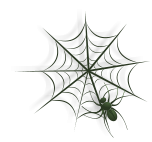

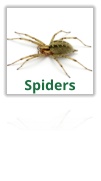
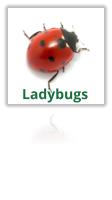
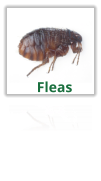

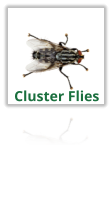
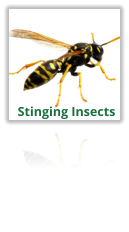
Being Pestered? We can help, call
Lakeshore Exterminating Company today.


© 2022 Lakeshore Exterminating Company, Iron Mountain, MI
Stinging Insects
Wasps
Wasps make up an enormously diverse array of insects, with some 30,000 identified species. We are most familiar with those that are wrapped in bright warning colors—ones that buzz angrily about in groups and threaten us with painful stings. But most wasps are actually solitary, non-stinging varieties. And all do far more good for humans by controlling pest insect populations than harm. Wasps are distinguishable from bees by their pointed lower abdomens and the narrow "waist," called a petiole, that separates the abdomen from the thorax. They come in every color imaginable, from the familiar yellow to brown, metallic blue, and bright red. Generally, the brighter colored species are in the Vespidae, or stinging wasp, family. All wasps build nests. Whereas bees secrete a waxy substance to construct their nests, wasps create their familiar papery abodes from wood fibers scraped with their hard mandibles and chewed into a pulp. Wasps are divided into two primary subgroups: social and solitary. Social wasps account for only about a thousand species and include formidable colony-builders, like yellow jackets and hornets. Some people can experience Anaphylaxis Shock when stung in severe cases if they are not treated, it can be fatal.
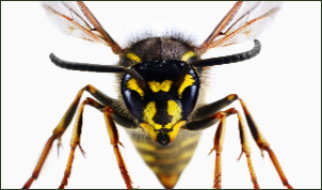
Bees
Bees are flying insects closely related to wasps and ants, and are known for their role in pollination and for producing honey and beeswax. Bees are a monophyletic lineage within the superfamily Apoidea presently considered as a clade Anthophila. There are nearly 20,000 known species of bees in seven to nine recognized families, though many are undescribed and the actual number is probably higher. They are found on every continent except Antarctica, in every habitat on the planet that contains insect-pollinated flowering plants. Bees are adapted for feeding on nectar and pollen, the former primarily as an energy source and the latter primarily for protein and other nutrients. Most pollen is used as food for larvae. Bees have a long proboscis (a complex "tongue") that enables them to obtain the nectar from flowers. They have antennae almost universally made up of 13 segments in males and 12 in females, as is typical for the superfamily. Bees all have two pairs of wings, the hind pair being the smaller of the two; in a very few species, one sex or caste has relatively short wings that make flight difficult or impossible, but none are wingless. If you are experiencing a honey bee problem we will call in a bee keeper to try to relocate the colony at no extra charge to you. Honey bees are very important to our ecosystem and we do not kill them unless it is absolutely necessary.Hornets
Hornets are insects that are the largest wasps. Some species can reach up to 5.5 cm (2.2 in) in length. The true hornets make up the genus Vespa and are distinguished from other vespines by the width of the vertex (part of the head behind the eyes), which is proportionally larger in Vespa and by the anteriorly rounded gasters (the section of the abdomen behind the wasp waist). The best known species is the European hornet (Vespa crabro), about 2–3.5 cm in length, widely distributed throughout Europe, Russia, North America and Northeast Asia. Most species make exposed nests in trees and shrubs, but some (like Vespa orientalis) build their nests underground or in other cavities

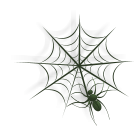



Iron Mountain: 906-774-1071
Escanaba: 906-789-9783

